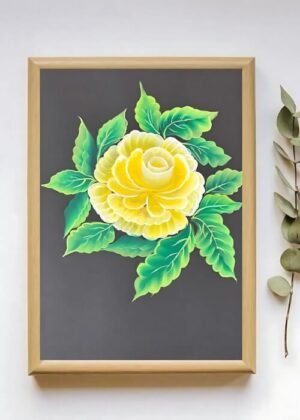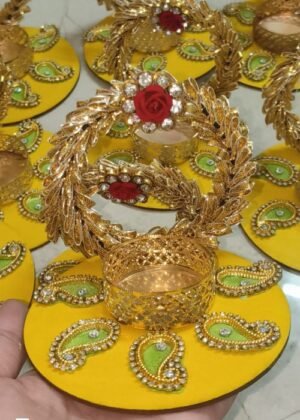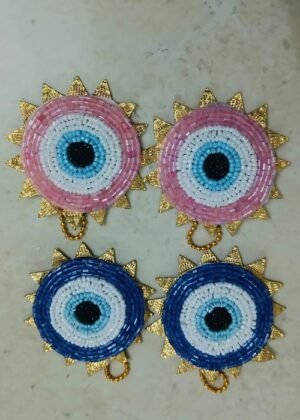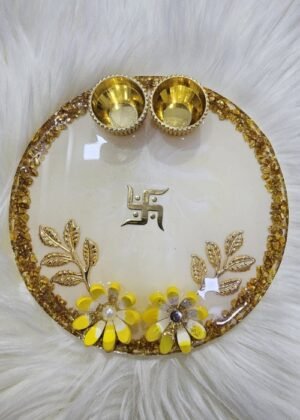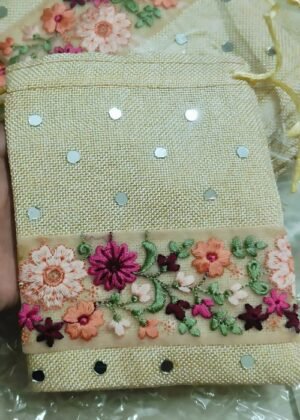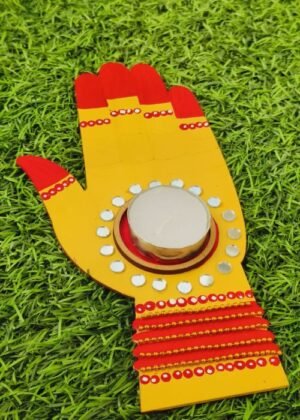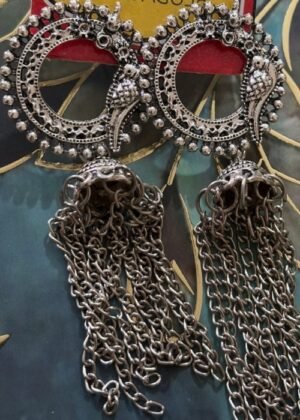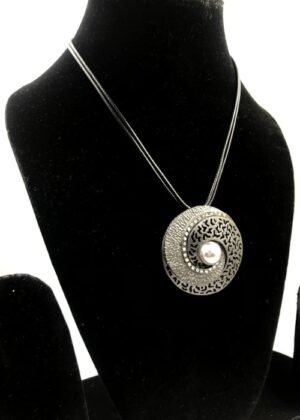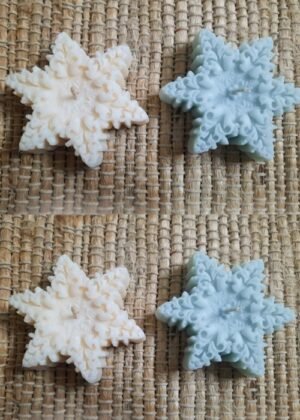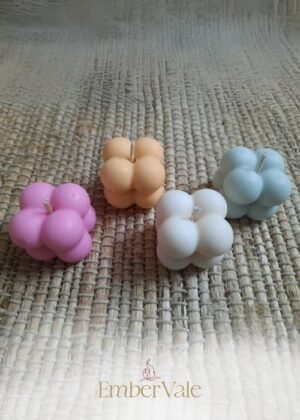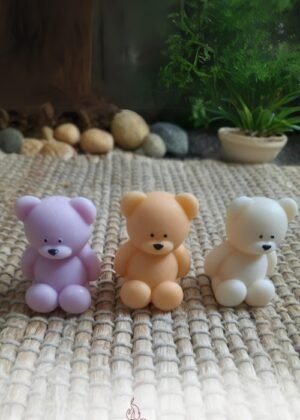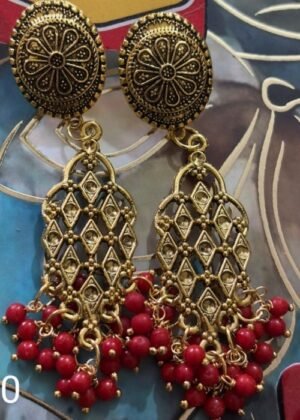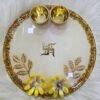-
6-Inch Resin Pooja Plate with Roli Chawal Katori – Spiritual Décor for Ceremonial Use
- Vendor:
Handy Mandy Art & Crafts
Browsing History
Browsing HistorySee All History
Loading more...
Unveiling the Ultimate Handmade Products Guide 2025
10 Must-Haves!

Introduction:
The allure of handmade products Guide continues to grow
In an increasingly mass-produced world, the allure of handmade products continues to grow. These unique creations offer a refreshing alternative to generic, factory-made items, carrying with them a story, a personal touch, and often, a commitment to sustainability. From intricate jewelry to bespoke home decor, handmade goods embody craftsmanship, creativity, and a dedication to quality that is hard to find elsewhere. As we move further into 2025, the demand for authentic, one-of-a-kind items is stronger than ever, driven by consumers who value individuality, ethical production, and supporting independent artisans. This comprehensive guide will take you on a journey through the world of handmade products, highlighting why they are an essential part of modern living and showcasing 10 must-have items that are set to define the year.
Whether you’re searching for the perfect gift, looking to add character to your home, or simply appreciate the artistry behind handcrafted goods, this guide will provide valuable insights and inspiration. Get ready to discover the beauty and charm of products made with passion and purpose.
-
-60%in Painting
Golden Bloom – Yellow Rose Acrylic Floral Painting with Wooden Frame (9×12 in)
₹2,999.00Original price was: ₹2,999.00.₹1,199.00Current price is: ₹1,199.00. -
-58%in Painting
Bloom Symphony – Combo of 3 Acrylic Floral Paintings (9 x 12 in, Framed)
₹5,999.00Original price was: ₹5,999.00.₹2,499.00Current price is: ₹2,499.00. -
-55%in Painting
Golden Bloom – Combo of 2 Acrylic Floral Paintings (9 x 12 in, Framed)
₹3,999.00Original price was: ₹3,999.00.₹1,799.00Current price is: ₹1,799.00. -
-65%in Painting
Floral Harmony – Combo of 2 Acrylic Paintings on Canvas (12 x 17 in, Framed)
₹10,999.00Original price was: ₹10,999.00.₹3,799.00Current price is: ₹3,799.00. -
-60%in Painting
Floral Symphony – Multicolor Acrylic Painting on Canvas (12 x 17 in, Framed)
₹5,999.00Original price was: ₹5,999.00.₹2,399.00Current price is: ₹2,399.00. -
-60%in Handmade
Whispers of Bloom – Acrylic Floral Painting on Canvas with Mirror Frame
₹5,999.00Original price was: ₹5,999.00.₹2,399.00Current price is: ₹2,399.00.
Why Choose Handmade Products Guide in 2025?
Choosing handmade products in 2025 goes beyond simply acquiring an item; it’s a conscious decision that reflects a deeper understanding of value, ethics, and personal connection. In an era dominated by rapid consumption and disposable goods, handmade items stand as a testament to enduring quality and thoughtful creation. The reasons for their increasing popularity are multifaceted, touching upon aspects of artistry, environmental responsibility, and community support.
1) The Rise of Artisan Crafts
The digital age has paradoxically fueled a resurgence in appreciation for artisan crafts. With endless options available at our fingertips, consumers are increasingly seeking out products that possess a unique narrative and a human touch. Handmade items, by their very nature, are distinct. They often bear the subtle imperfections and individual characteristics that machine-made goods lack, making each piece truly one-of-a-kind. This uniqueness resonates with individuals who desire to express their personal style and stand apart from the mainstream. The rise of online marketplaces dedicated to handmade goods, such as Etsy and Amazon Handmade [1], has made it easier than ever for artisans to connect directly with a global audience, further propelling the growth and visibility of these crafts. This direct connection fosters a sense of community and allows consumers to learn about the maker’s process, inspiration, and dedication, adding another layer of value to their purchase.
2) Sustainability and Ethical Sourcing
One of the most compelling reasons to choose handmade products in 2025 is their inherent connection to sustainability and ethical practices. Unlike large-scale manufacturing, which often relies on extensive supply chains and mass production methods that can be environmentally taxing, handmade production typically involves smaller batches, locally sourced materials, and a reduced carbon footprint. Artisans often prioritize natural, recycled, or upcycled materials, minimizing waste and promoting a more circular economy. For example, many handmade jewelry makers utilize recycled silver and gold, while textile artists might repurpose vintage fabrics or use natural dyes. This commitment to sustainable practices extends to the entire production process, from the careful selection of raw materials to the mindful disposal of waste. Furthermore, ethical sourcing is a cornerstone of the handmade movement. Artisans frequently work directly with suppliers, ensuring fair labor practices and transparent production methods
3) Supporting Small Businesses
Every purchase of a handmade product directly supports a small business, an independent artist, or a local artisan. In an economic landscape often dominated by large corporations, this direct support is vital for fostering creativity, innovation, and local economies. Small businesses are the backbone of many communities, providing unique goods and services, creating jobs, and contributing to local culture. When you buy handmade, you’re not just buying an item; you’re investing in someone’s dream, their passion, and their livelihood. This personal connection between buyer and maker is a powerful aspect of the handmade market. Artisans often pour their heart and soul into their creations, and this dedication is reflected in the quality and artistry of their work. Supporting these small enterprises helps to keep traditional crafts alive, encourages artistic expression, and promotes a more diverse and vibrant marketplace. It’s a tangible way to make a positive impact with your purchasing power, knowing that your
-
-66%in Handmade
Golden Tea Light Candle Holder – Elegant Spiritual Décor for Your Home
₹499.00Original price was: ₹499.00.₹169.00Current price is: ₹169.00. -
-60%in Handmade
Handcrafted Evil Eye Hanging | Protection & Elegance Home Décor | Handmade
₹399.00Original price was: ₹399.00.₹160.00Current price is: ₹160.00. -
-13%in Handmade
6-Inch Resin Pooja Plate with Roli Chawal Katori – Spiritual Décor for Ceremonial Use
₹799.00Original price was: ₹799.00.₹699.00Current price is: ₹699.00. -
-37%in Handmade
Handmade Gift Pack Jute Bag – Eco-Friendly, Stylish & Unique Packaging for Gifts
₹299.00Original price was: ₹299.00.₹189.00Current price is: ₹189.00. -
-40%in Handmade
Handcrafted Hand-Shaped Tealight Candle Holder | Home Décor
₹299.00Original price was: ₹299.00.₹180.00Current price is: ₹180.00. -
-58%in Handmade
Moti Tea Light Candle Holder – Elegant Decorative Candle Holder for Your Home & Altar
₹399.00Original price was: ₹399.00.₹169.00Current price is: ₹169.00. -
in Art & Craft
Beach View Round Nameplate | MDF & Resin with Waves, Shells & Mini Boat
₹2,880.00 – ₹4,290.00Price range: ₹2,880.00 through ₹4,290.00Select options This product has multiple variants. The options may be chosen on the product page -
-40%in Handmade
Handcrafted Aasan for Laxmi Ganesh, Ganpati & Laddu Gopal – Divine Spiritual Décor
₹1,999.00Original price was: ₹1,999.00.₹1,200.00Current price is: ₹1,200.00. -
-66%in Handmade
Kuiri Tea Light Candle Holder – Elegant Decorative Light for Home & Spiritual Spaces
₹499.00Original price was: ₹499.00.₹169.00Current price is: ₹169.00. -
-40%in Handmade
Handcrafted Aasan for Laxmi Ganesh, Ganpati & Laddu Gopal | Divine Décor
₹1,999.00Original price was: ₹1,999.00.₹1,200.00Current price is: ₹1,200.00.
Top 10 Handmade Products to Discover in 2025
As we navigate 2025, the landscape of handmade products is richer and more diverse than ever. Artisans are continually innovating, blending traditional techniques with contemporary aesthetics to create items that are both beautiful and functional. Here are 10 must-have handmade products that are trending this year, offering unique ways to express your style, enhance your home, and find the perfect gift.
1) Unique Handmade Jewelry
Handmade jewelry continues to be a cornerstone of the artisan market, offering pieces that are far more personal and distinctive than mass-produced alternatives. In 2025, trends lean towards personalized necklaces, delicate beaded earrings, and statement rings crafted from ethically sourced materials. These pieces often incorporate unique gemstones, intricate wirework, or repurposed elements, making each item a wearable work of art. The beauty of unique handmade jewelry lies in its ability to tell a story, whether it’s the origin of the materials or the inspiration behind the design. Consumers are seeking pieces that resonate with their personal values, such as those made with recycled silver or conflict-free diamonds. This category also includes bespoke creations, where artisans work directly with customers to design custom pieces that hold deep sentimental value. The attention to detail and the quality of craftsmanship in handmade jewelry ensure that these pieces are not just accessories, but heirlooms to
2) Handcrafted Home Decor
Transforming living spaces with handcrafted home decor is a significant trend in 2025. These items bring warmth, character, and a sense of individuality to any room. Popular choices include ceramic vases with organic shapes, intricately woven macrame wall hangings, and unique sculptural pieces made from natural materials like wood or stone. Unlike mass-produced decor, handcrafted items often carry the subtle marks of their creation, adding to their charm and authenticity. Artisans are experimenting with various textures, colors, and forms to create pieces that complement diverse interior design styles, from minimalist to bohemian. Whether it’s a hand-painted ceramic planter, a custom-made textile throw, or a unique wooden sculpture, these handmade products elevate a house into a home, reflecting the personality and taste of its inhabitants. The focus is on creating a curated environment that feels personal and inviting, rather than simply filling a space with generic items.
3) Artisan Kitchenware
The kitchen, often considered the heart of the home, is another area where handmade products are making a significant impact. Artisan kitchenware in 2025 is all about combining functionality with aesthetic appeal. Think beautifully crafted pottery mugs that feel just right in your hands, unique wooden cutting boards that double as serving platters, and hand-blown glass tumblers that add a touch of elegance to any meal. These items are not only practical but also bring a sense of artistry to everyday rituals. Many artisans focus on sustainable practices, using food-safe glazes and responsibly sourced wood. The tactile experience of using a handmade bowl or a hand-carved spoon enhances the enjoyment of cooking and dining, fostering a deeper connection to the food we prepare and consume. This category also includes specialized items like custom ceramic fermentation crocks or hand-forged culinary tools, appealing to those who appreciate the finer details in their culinary pursuits.
4) Eco-Friendly Handmade Skincare
With a growing emphasis on health and environmental consciousness, eco-friendly handmade skincare is gaining immense popularity in 2025. Consumers are increasingly seeking natural, chemical-free alternatives for their personal care routines. This includes products like artisanal soaps made with nourishing plant-based oils, luxurious bath bombs infused with essential oils, and organic lotions crafted from natural ingredients. The appeal lies in the transparency of ingredients and the absence of harsh chemicals often found in commercial products. Many handmade skincare brands prioritize sustainable packaging, using recyclable or compostable materials, and avoid animal testing. These products often feature unique scent profiles derived from natural botanicals and offer a sensory experience that promotes well-being. By choosing eco-friendly handmade skincare, consumers not only nurture their skin but also support practices that are kind to the planet, aligning their beauty routines with their ethical values.
5) Custom Handmade Apparel
Moving away from fast fashion, custom handmade apparel is a significant trend in 2025, offering unique, high-quality garments that are made to last. This category includes everything from hand-painted t-shirts and intricately embroidered jackets to bespoke knitted scarves and custom-tailored dresses. The emphasis is on individuality, craftsmanship, and sustainable production. Artisans often use natural fibers, upcycled fabrics, and non-toxic dyes, ensuring that each piece is not only stylish but also environmentally responsible. Custom handmade apparel allows consumers to express their personal style in a way that mass-produced clothing cannot, offering unique designs and a perfect fit. The process often involves direct collaboration with the artisan, allowing for personalized details and a deeper connection to the garment. This approach to fashion promotes conscious consumption, encouraging individuals to invest in fewer, higher-quality pieces that they will cherish for years, rather than constantly buying
6) Personalized Handmade Gifts
In 2025, personalized handmade gifts are the ultimate expression of thoughtfulness and care. These gifts go beyond generic presents, offering a unique and memorable experience for the recipient. Popular options include custom portraits of pets or loved ones, engraved wooden items, personalized jewelry with initials or significant dates, and bespoke scrapbooks filled with cherished memories. The value of a personalized handmade gift lies in the effort and consideration that goes into its creation, making it truly one-of-a-kind. Artisans often work closely with customers to incorporate specific details, ensuring that the gift perfectly reflects the recipient’s personality and the sentiment of the occasion. These gifts are not just objects; they are tangible representations of connection and affection, designed to evoke joy and create lasting memories. Whether for birthdays, anniversaries, or special milestones, personalized handmade gifts offer a deeply meaningful way to show you care.
7) Handmade Toys for Kids
Parents in 2025 are increasingly turning to handmade toys for kids, prioritizing safety, durability, and developmental benefits over mass-produced plastic alternatives. This category includes charming wooden puzzles, soft fabric dolls, hand-knitted animals, and educational felt busy boards. These toys are often made from natural, non-toxic materials, ensuring they are safe for children of all ages. The simplicity and open-ended nature of handmade toys encourage imaginative play, creativity, and the development of fine motor skills. Unlike electronic toys that often dictate play, handmade toys allow children to explore and create their own narratives, fostering independent thinking. Many artisans focus on creating durable toys that can withstand years of play and be passed down through generations, promoting sustainability and reducing waste. Handmade toys are not just playthings; they are tools for learning and growth, designed to engage young minds in a meaningful and wholesome way.
8) Unique Handmade Stationery
In an increasingly digital world, the charm of unique handmade stationery is experiencing a resurgence in 2025. Consumers are rediscovering the joy of putting pen to paper, and handmade stationery adds a touch of elegance and personality to this experience. This includes items like handcrafted paper with embedded seeds, custom-designed journals with unique covers, hand-stamped greeting cards, and personalized wax seals. These products often feature intricate details, unique textures, and artisanal finishes that set them apart from mass-produced stationery. The appeal lies in the tactile experience and the opportunity to express individuality through written communication. Handmade stationery is perfect for special occasions, heartfelt letters, or simply adding a touch of beauty to your daily notes. It also makes for thoughtful gifts, allowing recipients to enjoy the luxury of beautiful paper and unique designs. This trend reflects a desire to slow down, appreciate the art of writing, and connect with others
9) Hand-Poured Candles
Hand-poured candles continue to be a popular handmade product in 2025, offering a sensory experience that enhances any living space. These candles are often made with natural waxes like soy or beeswax, infused with high-quality essential oils for a clean burn and exquisite fragrance. Unlike mass-produced candles that may contain synthetic fragrances and paraffin wax, hand-poured candles prioritize natural ingredients and sustainable practices. Artisans experiment with unique scent blends, beautiful vessel designs, and eco-friendly wicks to create candles that are both aesthetically pleasing and aromatically delightful. The process of hand-pouring allows for greater control over the quality of ingredients and the overall craftsmanship, resulting in a superior product. These candles are perfect for creating a relaxing ambiance, adding a touch of luxury to your home, or as thoughtful gifts. The demand for natural, non-toxic home fragrance options ensures that hand-poured candles remain a cherished handmade item
10) Handmade Pet Accessories
Our beloved pets are also benefiting from the handmade movement in 2025, with a growing market for unique and high-quality handmade pet accessories. This includes items like custom pet collars made from durable, natural materials, hand-knitted pet beds for ultimate comfort, personalized pet tags, and artisanal pet toys crafted from safe, non-toxic components. Pet owners are increasingly seeking out products that are not only functional but also reflect their pet’s personality and their own commitment to quality and sustainability. Many handmade pet accessories are designed with the animal’s comfort and safety in mind, using hypoallergenic materials and ergonomic designs. Supporting artisans in this category means investing in products that are made with care and attention to detail, often by fellow pet lovers. These handmade products allow pet owners to pamper their furry friends with unique, durable, and ethically produced items that stand out from generic pet store offerings.
-
-13%in Handmade
6-Inch Resin Pooja Plate with Roli Chawal Katori – Spiritual Décor for Ceremonial Use
₹799.00Original price was: ₹799.00.₹699.00Current price is: ₹699.00. -
-65%in Painting
Floral Harmony – Combo of 2 Acrylic Paintings on Canvas (12 x 17 in, Framed)
₹10,999.00Original price was: ₹10,999.00.₹3,799.00Current price is: ₹3,799.00. -
-50%in Art & Craft
Handmade Terracotta Ganesha Idol – Pen Stand & Home Decor
₹599.00Original price was: ₹599.00.₹299.00Current price is: ₹299.00. -
-40%in Handmade
Handmade Floral Pearl Pooja Thali – Elegant Wedding & Festival Decor
₹1,999.00Original price was: ₹1,999.00.₹1,200.00Current price is: ₹1,200.00. -
-55%in Painting
Golden Bloom – Combo of 2 Acrylic Floral Paintings (9 x 12 in, Framed)
₹3,999.00Original price was: ₹3,999.00.₹1,799.00Current price is: ₹1,799.00. -
-60%in Handmade
Handcrafted Evil Eye Hanging | Protection & Elegance Home Décor | Handmade
₹399.00Original price was: ₹399.00.₹160.00Current price is: ₹160.00. -
-64%in Art & Craft
Handmade Antique Coin Jewellery Earrings – Vintage Ethnic Statement
₹799.00Original price was: ₹799.00.₹290.00Current price is: ₹290.00. -
-58%in Painting
Bloom Symphony – Combo of 3 Acrylic Floral Paintings (9 x 12 in, Framed)
₹5,999.00Original price was: ₹5,999.00.₹2,499.00Current price is: ₹2,499.00. -
-40%in Handmade
Handcrafted Hand-Shaped Tealight Candle Holder | Home Décor
₹299.00Original price was: ₹299.00.₹180.00Current price is: ₹180.00. -
-74%in Jewellery
Elegant Handmade Silver Earrings with Chain Tassels – Unique Jewelry
₹899.00Original price was: ₹899.00.₹230.00Current price is: ₹230.00.
How to Identify Quality Handmade Products Guide
In a market increasingly saturated with items labeled “handmade,” discerning true quality can be a challenge. However, by focusing on a few key indicators, consumers can confidently identify authentic, high-quality handmade products that are worth the investment. Understanding what sets superior craftsmanship apart is essential for making informed purchasing decisions and ensuring that you are supporting genuine artisans.
1) Materials and Craftsmanship
The foundation of any quality handmade product lies in the materials used and the skill with which they are transformed. Artisans dedicated to their craft will often specify the origin and type of materials, whether it’s ethically sourced wood, organic cotton, recycled metals, or natural dyes. Look for descriptions that detail the quality of the raw materials, as this directly impacts the durability and aesthetic appeal of the final product. For instance, in handmade jewelry, sterling silver or gold-filled components indicate a higher quality than plated alternatives. In textiles, natural fibers like linen, wool, or silk, especially when hand-dyed or hand-woven, speak to superior craftsmanship. Examine the finishing details: are seams neatly sewn, edges smoothly sanded, and connections securely fastened? The precision and care evident in the construction are hallmarks of a skilled artisan. Minor imperfections can be part of the charm of handmade items, but shoddy construction or poor-quality materials are re
2) Authenticity and Uniqueness
One of the primary appeals of handmade products is their authenticity and uniqueness. Unlike mass-produced goods, which are replicated identically thousands or millions of times, each handmade item possesses its own distinct character. This individuality stems from the artisan’s personal touch, their creative vision, and the inherent variations that occur during the manual creation process. When evaluating a handmade product, consider its originality. Does it feel like a genuine expression of the maker’s artistry, or does it mimic popular designs without adding a unique twist? Authentic handmade items often come with a story – about the inspiration behind the piece, the techniques used, or the cultural heritage it represents. This narrative adds significant value and connects the buyer to the maker on a deeper level. Be wary of items that are mass-produced but marketed as handmade; true handmade products will typically have a limited production scale and a clear connection to the individual or small team tha
3) Reviews and Artisan Reputation
In today’s interconnected world, the reputation of an artisan and the reviews of their products are invaluable indicators of quality. Before making a purchase, especially from an unfamiliar seller, take the time to research their background and read customer feedback. Online marketplaces like Etsy and Amazon Handmade [1] provide platforms for buyers to leave reviews, offering insights into product quality, customer service, and shipping reliability. Look for consistent positive feedback regarding the craftsmanship, durability, and accuracy of product descriptions. Pay attention to how the artisan responds to inquiries or addresses any issues, as this reflects their professionalism and commitment to customer satisfaction. A strong online presence, including a well-maintained website (like shivanijaswal.com for its unique offerings) and active social media channels, can also be a good sign, indicating a dedicated and transparent business. Word-of-mouth recommendations from friends, family, or trusted online co
-
-11%in Jewellery
Boho Charm- Grey Mushroom-Shaped Pendant with Delicate Bead – Nature-Inspired Necklace
₹540.00Original price was: ₹540.00.₹480.00Current price is: ₹480.00. -
-9%in Jewellery
Amoeba-Inspired Crystal Brass Finger Ring – Elegant & Unique Design
₹440.00Original price was: ₹440.00.₹400.00Current price is: ₹400.00. -
-11%in Jewellery
Butterfly & Leaves-Inspired Crystal Brass Finger Ring – Elegant & Nature-Inspired
₹450.00Original price was: ₹450.00.₹400.00Current price is: ₹400.00. -
-19%in Jewellery
Minimalist Majesty – Simple Statement Hasli for Timeless Elegance
₹999.00Original price was: ₹999.00.₹810.00Current price is: ₹810.00. -
-25%in Jewellery
Radiant Elegance – Textured Stone AdornRadiant Elegance – Textured Stone Adornment for Hasli Necklace
₹1,599.00Original price was: ₹1,599.00.₹1,199.00Current price is: ₹1,199.00. -
-29%in Jewellery
Flying Butterfly Handcrafted Earrings with Crystals
₹699.00Original price was: ₹699.00.₹499.00Current price is: ₹499.00. -
-34%in Jewellery
Galaxy of Stars Crystal Brass Earrings
₹999.00Original price was: ₹999.00.₹659.00Current price is: ₹659.00.
Where to Buy the Best Handmade Products Guide in 2025
Finding authentic and high-quality handmade products in 2025 is easier than ever, thanks to a variety of platforms and avenues that connect artisans with eager consumers. While the digital landscape offers unparalleled access, traditional markets still hold a special charm. Understanding where to look can significantly enhance your shopping experience and ensure you find exactly what you’re seeking.
1) Online Marketplaces
Online marketplaces remain the most accessible and diverse platforms for discovering handmade products. Etsy [2], for instance, is a global behemoth in the handmade and vintage goods sector, offering millions of unique items from independent sellers worldwide. Its extensive search filters allow buyers to narrow down their preferences by category, price, and even location, making it easy to find specific handmade items. Similarly, Amazon Handmade [3] provides a curated section within the Amazon ecosystem dedicated exclusively to handcrafted goods, offering the convenience of Amazon’s shipping and customer service alongside the charm of artisan products. Other notable online platforms include Uncommon Goods [4], which focuses on unique and creatively designed gifts, many of which are handmade, and Ten Thousand Villages [5], a fair trade organization that sells handcrafted items from artisans in developing countries. These platforms not only offer a vast selection but also provide a degree of buyer protection and often feature reviews that can guide purchasing decisions. When shopping on these sites, look for detailed product descriptions, clear images, and positive seller reviews to ensure a satisfactory experience.
2) Local Artisan Markets
For those who prefer a more tactile and personal shopping experience, local artisan markets, craft fairs, and pop-up events are invaluable. These physical venues offer a unique opportunity to meet the makers face-to-face, learn about their creative process, and feel the quality of their handmade products firsthand. Many cities host regular farmers’ markets that include artisan sections, as well as dedicated craft shows throughout the year, especially during holiday seasons. These markets foster a strong sense of community, allowing consumers to directly support local economies and connect with the creative talent in their area. The interaction with the artisan often adds a deeper layer of appreciation for the product, as you can hear the story behind its creation and understand the passion that went into it. Keep an eye on local event listings, community calendars, and social media groups to find out about upcoming artisan markets in your vicinity. This direct engagement not only ensures authenticity but als
3) Direct from Makers
Many independent artisans and small businesses, including those featured on shivanijaswal.com, operate their own online stores, offering a direct purchasing channel. Buying directly from a maker’s website often means a larger portion of your purchase goes directly to the artist, fostering a more sustainable business model for them. These independent sites frequently showcase the artisan’s full range of work, provide in-depth insights into their creative process, and offer exclusive items not available elsewhere. For example, shivanijaswal.com specializes in a diverse range of handmade products, from home decor to fashion accessories, providing a direct link to unique, handcrafted items. Many artisans also leverage social media platforms like Instagram and Facebook to showcase their work and connect with customers, often providing links to their direct online shops. This direct-to-consumer model allows for a more intimate relationship between buyer and maker, offering personalized customer service and the sat
-
-38%in Candles
Luxury Marble Bowl Scented Soy Wax Candle – 280g
₹799.00Original price was: ₹799.00.₹499.00Current price is: ₹499.00.Select options This product has multiple variants. The options may be chosen on the product page -
-48%in Candles
Scented Glass Beads Candle – Jasmine, Lavender, Lemongrass
₹799.00Original price was: ₹799.00.₹419.00Current price is: ₹419.00.Select options This product has multiple variants. The options may be chosen on the product page -
in Candles
Scented Soy Wax Candle in Colored Tin Box – 110g Gift Set
₹349.00 – ₹1,249.00Price range: ₹349.00 through ₹1,249.00Select options This product has multiple variants. The options may be chosen on the product page -
-57%in Candles
Floral Bliss Lavender Candle – Romantic Gift for Love
₹999.00Original price was: ₹999.00.₹429.00Current price is: ₹429.00. -
Select options This product has multiple variants. The options may be chosen on the product page
-
Select options This product has multiple variants. The options may be chosen on the product page
-
Select options This product has multiple variants. The options may be chosen on the product page
-
Select options This product has multiple variants. The options may be chosen on the product page
-
in Art & Craft
Handmade Bubble Textured Scented Candles – Aromatic & Decorative in Various Colors
₹329.00Select options This product has multiple variants. The options may be chosen on the product page
The Future of Handmade Products Guide for Trends for 2025 and Beyond
The handmade market is dynamic, constantly evolving to meet consumer demands and technological advancements. As we look beyond 2025, several key trends are poised to shape the future of handmade products, further solidifying their place in the global economy and cultural landscape.
1) Sustainable Practices
The emphasis on sustainability in handmade products is not a fleeting trend but a fundamental shift that will continue to deepen. Consumers are increasingly conscious of their environmental impact and are actively seeking products that align with their values. This means a greater demand for items made from recycled, upcycled, and biodegradable materials. Artisans will continue to innovate in sustainable sourcing, exploring new eco-friendly materials and processes, such as plant-based dyes, reclaimed wood, and ocean plastic. The focus will also extend to the entire lifecycle of a product, from its creation to its eventual disposal or repurposing. Transparency in supply chains, ethical labor practices, and a commitment to reducing waste will become even more critical for handmade businesses. This trend will drive artisans to adopt more circular economy principles, where materials are reused and repurposed, minimizing environmental harm and promoting a more responsible approach to consumption.
2) Customization and Personalization
The desire for unique and personalized items will continue to drive the handmade market. In an age of mass production, consumers crave products that reflect their individuality and tell a personal story. Artisans are uniquely positioned to meet this demand, offering bespoke creations that can be tailored to specific preferences. The future will see even more advanced customization options, enabled by technology that allows for seamless communication between buyer and maker. This could include virtual design consultations, 3D rendering of custom pieces, and interactive platforms where customers can co-create their desired items. Personalized handmade gifts, in particular, will remain highly sought after, as they offer a deeply meaningful way to connect with loved ones. The ability to add initials, dates, custom colors, or unique designs will become a standard expectation, pushing artisans to offer increasingly flexible and creative customization services.
3) Digital Integration for Artisans
While handmade products are inherently tangible, the digital realm will play an increasingly vital role in their creation, marketing, and distribution. Artisans will continue to leverage e-commerce platforms, social media, and digital marketing tools to reach wider audiences and streamline their operations. This includes using advanced photography and videography to showcase their work, employing data analytics to understand customer preferences, and utilizing digital tools for design and prototyping. The rise of virtual reality (VR) and augmented reality (AR) could also transform the shopping experience, allowing customers to virtually try on handmade jewelry or visualize home decor items in their own spaces before purchasing. Furthermore, online workshops and tutorials will empower more individuals to learn traditional crafts, fostering a new generation of artisans and expanding the handmade community. The blend of traditional craftsmanship with cutting-edge digital tools will enable artisans to scale thei
-
-32%in Handmade
CRAFTCANE Bamboo Cane Swing Chair – Hanging Jhula with Cushion for Kids & Adults
₹8,500.00Original price was: ₹8,500.00.₹5,800.00Current price is: ₹5,800.00. -
-72%in Jewellery
Handmade Gold-Plated Earrings with Red Beads – Stunning Jewelry
₹799.00Original price was: ₹799.00.₹220.00Current price is: ₹220.00. -
-60%in Handmade
Handcrafted Evil Eye Hanging | Protection & Elegance Home Décor | Handmade
₹399.00Original price was: ₹399.00.₹160.00Current price is: ₹160.00. -
-58%in Painting
Bloom Symphony – Combo of 3 Acrylic Floral Paintings (9 x 12 in, Framed)
₹5,999.00Original price was: ₹5,999.00.₹2,499.00Current price is: ₹2,499.00. -
-50%in Art & Craft
Handmade Terracotta Ganesha Idol – Pen Stand & Home Decor
₹599.00Original price was: ₹599.00.₹299.00Current price is: ₹299.00. -
-58%in Jewellery
Sterling Silver Nose Pin with White Stone – Clip-On Style
₹1,200.00Original price was: ₹1,200.00.₹499.00Current price is: ₹499.00. -
-74%in Jewellery
Elegant Handmade Silver Earrings with Chain Tassels – Unique Jewelry
₹899.00Original price was: ₹899.00.₹230.00Current price is: ₹230.00. -
-60%in Painting
Floral Symphony – Multicolor Acrylic Painting on Canvas (12 x 17 in, Framed)
₹5,999.00Original price was: ₹5,999.00.₹2,399.00Current price is: ₹2,399.00. -
-13%in Handmade
6-Inch Resin Pooja Plate with Roli Chawal Katori – Spiritual Décor for Ceremonial Use
₹799.00Original price was: ₹799.00.₹699.00Current price is: ₹699.00. -
-60%in Handmade
Whispers of Bloom – Acrylic Floral Painting on Canvas with Mirror Frame
₹5,999.00Original price was: ₹5,999.00.₹2,399.00Current price is: ₹2,399.00.
Conclusion:
In conclusion, the world of handmade products in 2025 is a vibrant and growing testament to the enduring value of craftsmanship, individuality, and conscious consumption. From unique handmade jewelry that tells a personal story to eco-friendly home decor that transforms living spaces, these items offer a refreshing alternative to the mass-produced. Choosing handmade means investing in quality, supporting small businesses, and contributing to a more sustainable and ethical marketplace. As consumer awareness continues to rise, the demand for authentic, handcrafted goods will only strengthen, driven by a desire for products that are made with passion, purpose, and a human touch. We encourage you to explore the diverse offerings of artisans, discover the beauty of their creations, and experience the profound satisfaction that comes from owning something truly special. Embrace the handmade movement and enrich your life with items that carry a unique narrative and a commitment to a better future.
Frequently asked questions
❓ FAQs About Handmade Products
A product is considered handmade when it is crafted primarily by hand, rather than by machine or mass production methods. This often involves a significant degree of human skill, artistry, and attention to detail throughout the creation process. While some tools may be used, the defining characteristic is the direct involvement of the artisan in shaping and finishing the item, resulting in unique variations and a personal touch.
Handmade products can sometimes be more expensive than their mass-produced counterparts due to several factors. Artisans invest significant time, skill, and often higher-quality, ethically sourced materials into each piece. They also bear the costs of design, production, marketing, and often, fair wages for their labor. While the initial cost might be higher, the durability, uniqueness, and ethical value of handmade items often provide greater long-term value.
The care instructions for handmade items vary widely depending on the materials and craftsmanship. It is always best to follow specific care instructions provided by the artisan. Generally, handmade items may require gentle cleaning, avoiding harsh chemicals, and protecting them from extreme conditions. For example, handmade pottery might be hand-wash only, while certain textiles may require delicate washing or dry cleaning. When in doubt, consult the maker or opt for the gentlest care method to preserve the item’s integrity and beauty.
0
0
votes
Article Rating
Subscribe
Login
0 Comments
Oldest
Newest
Most Voted
Inline Feedbacks
View all comments

